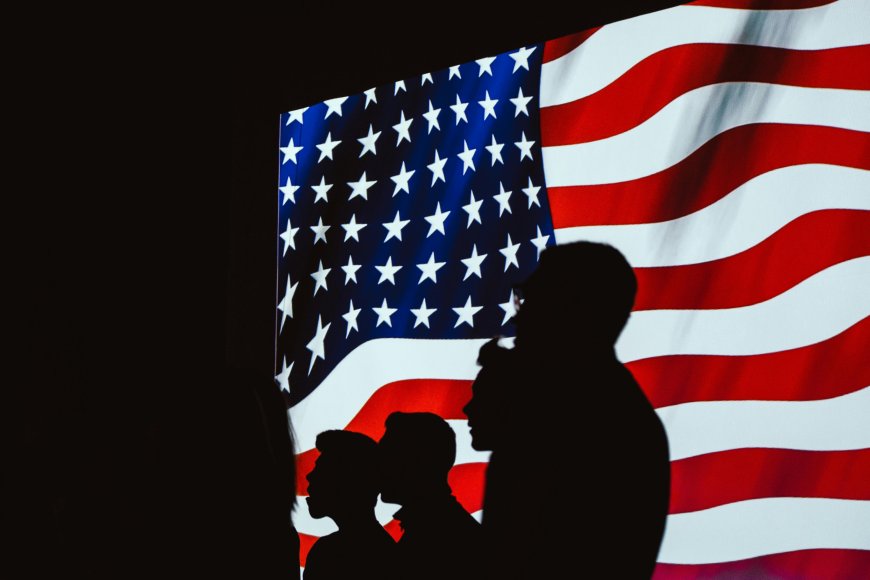Economic Uncertainty and Fear Grow as Trump’s Policies, Layoffs, and Inflation Fears Rattle Consumers and Businesses
Fears of inflation, federal layoffs, declining retail sales, and Wall Street pessimism are fueling economic uncertainty, raising concerns about consumer spending and the resilience of the US economy.

Economic Uncertainty and Fear Grow as Trump’s Policies, Layoffs, and Inflation Fears Rattle Consumers and Businesses
American consumers and businesses are growing increasingly uneasy as fears of higher inflation, federal layoffs, and declining retail sales weigh on the economy. Wall Street sentiment has shifted into “extreme fear,” according to CNN’s Fear & Greed Index, a level not seen since December. This growing unease is raising critical questions about the resilience of the world’s largest economy and whether it can withstand the pressures of political and economic uncertainty.
Wall Street’s Growing Fear
Investor sentiment on Wall Street has taken a sharp turn for the worse, with the Fear & Greed Index indicating “extreme fear” for the first time in months. This shift reflects broader concerns about the impact of Trump’s policies, including tariffs and federal workforce cuts, on the economy. While pessimism doesn’t always lead to a pullback in spending, the current climate of uncertainty could have a more profound effect.
“It’s way too premature to conclude that recession dynamics are starting to take hold, but this could be a unique time when uncertainty does upend sentiment and actually causes consumers to pull back,” said Mark Zandi, chief economist at Moody’s.
Inflation Fears and Consumer Confidence
The specter of inflation, driven by Trump’s aggressive trade policies, is putting the nation on edge. Recent surveys highlight a sharp decline in consumer confidence, with The Conference Board reporting its steepest monthly drop since August 2021. This decline reflects growing concerns about the impact of tariffs on prices and the broader economy.
For businesses, the outlook is equally uncertain. The National Federation of Independent Business (NFIB), which has been tracking small business sentiment since 1973, recorded its third-highest reading ever on its Uncertainty Index for January. This surge in uncertainty underscores the unease felt by small business owners, who are grappling with the potential ripple effects of Trump’s trade policies.
Mixed Signals in Consumer Spending
Consumer spending, which accounts for about 70% of the US economy, remains a critical indicator of economic health. However, recent data has been less than encouraging. Retail sales fell 0.9% in January, marking the first monthly decline since August 2024. Economists attribute the drop to unseasonably cold weather rather than a fundamental shift in consumer behavior, but the decline has still raised eyebrows.
Walmart, America’s largest retailer, added to the concerns by warning that its sales and profit growth could slow this year. Years of high inflation and elevated borrowing costs have strained lower-income consumers, who are increasingly feeling the pinch.
“I think the economy is weakening,” said Tony James, former president of asset manager Blackstone and chairman of Costco’s board of directors. “At the same time, I think the uncertainty out of Washington is causing businesses to slow down.”
Federal Layoffs and Consumer Confidence
The Trump administration’s efforts to pare back the federal government’s civilian workforce, under the direction of Elon Musk’s Department of Government Efficiency, are adding to the economic unease. While federal layoffs represent less than 2% of total US jobs, they could still spook consumers and lead to broader spending cuts.
“When layoffs hit close to home, people start getting nervous,” said Robert Frick, corporate economist at Navy Federal Credit Union. However, experts believe the resilient US labor market can absorb these cuts without toppling the economy.
“We do expect to see a slight rise in the unemployment rate later this year, but mostly holding steady,” said Grace Zwemmer, senior economist at Oxford Economics.
The Role of the Job Market
Despite the growing uncertainty, the US job market remains a bright spot. Unemployment stands at 4%, and average hourly earnings continue to grow, according to Labor Department data. This stability bodes well for consumer spending, which has historically been closely tied to income and employment levels.
“The better correlation with spending is with consumer income and the overall health of the job market,” Frick noted. “I don’t see a recession unfolding this year.”
What’s Next for the US Economy?
The coming months will be critical in determining the trajectory of the US economy. If consumer confidence continues to erode and spending slows, the risks of an economic downturn will increase. However, if the job market remains strong and inflation fears subside, the economy could weather the current storm.
For now, the mood remains tense. As Zandi put it, “The stakes are incredibly high. If confidence doesn’t rebound soon, we could be looking at a very different economic landscape by the end of the year.”
Conclusion
Economic uncertainty is growing as Trump’s policies, federal layoffs, and declining retail sales rattle consumers and businesses. While the US job market remains resilient, the combination of inflation fears, Wall Street pessimism, and political unpredictability is creating a climate of fear that could weigh on the economy. As the nation watches for signs of a consumer pullback or broader economic slowdown, the stakes for the US economy have never been higher.
 Kinyarwanda
Kinyarwanda
 English
English







































































